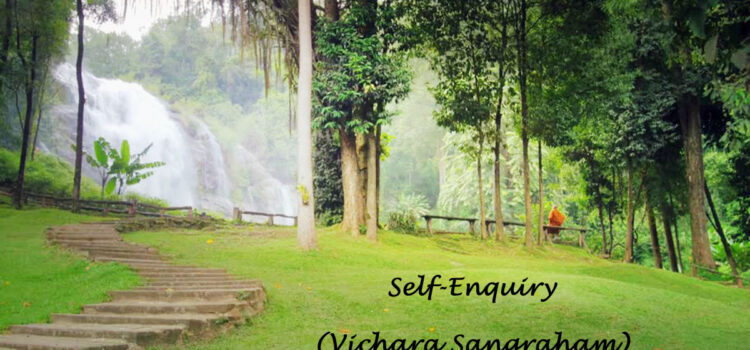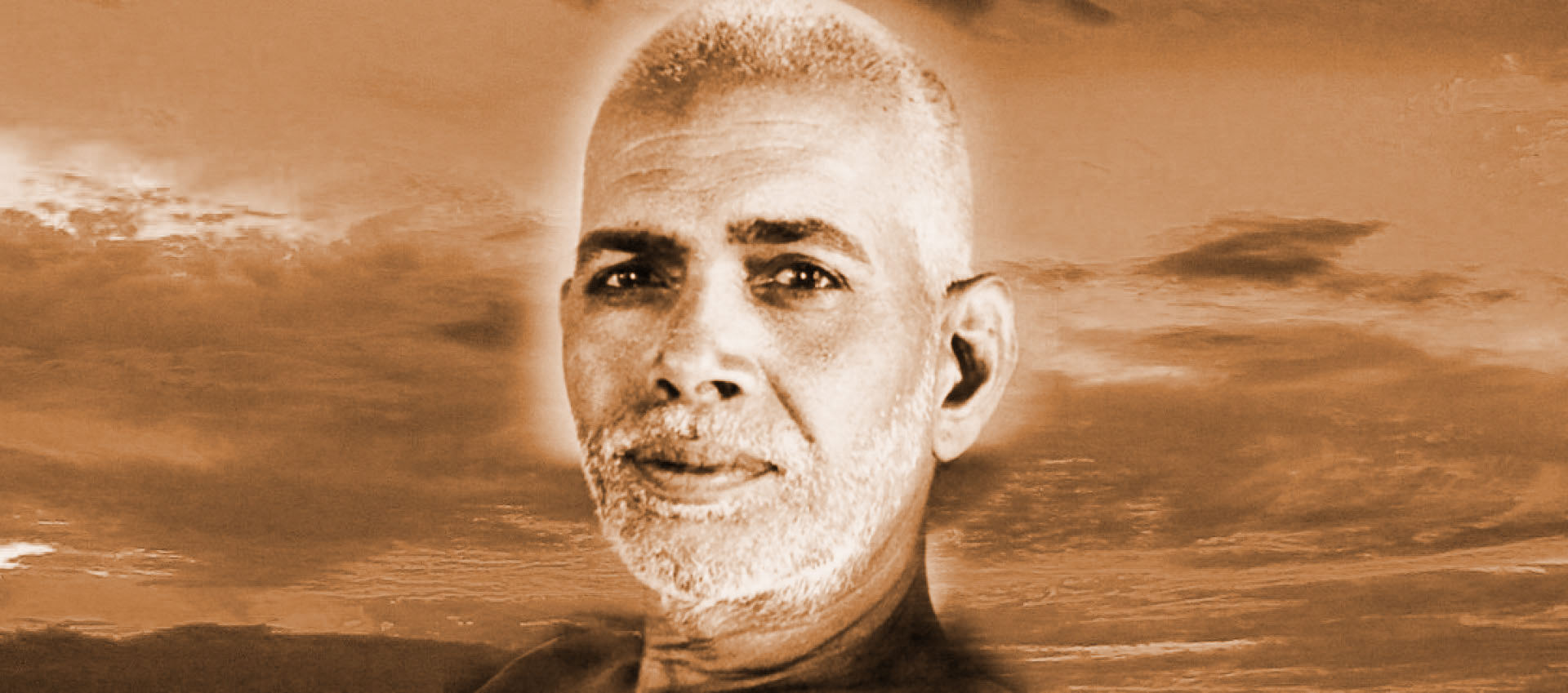
Self-enquiry – Vichara Sangraham (11)
(11)
Devotee:
Is Self-experience possible for the mind, whose nature is constant change?
Maharshi:
Since sattva-guna (the constituent of prakriti which makes for purity, intelligence, etc.) is the nature of mind, and since the mind is pure and undefiled like ether, what is called mind is, in truth, of the nature of knowledge.
When it stays in that natural, that is, pure state, it has not even the name ‘mind’. It is only the erroneous knowledge which mistakes one for another that is called mind.
What was (originally) the pure sattva mind, of the nature of pure knowledge, forgets its knowledge-nature on account of nescience, gets transformed into the world under the influence of tamo-guna (i.e. the constituent of prakriti which makes for dullness, inertness, etc.).
Being under the influence of rajo-guna (i.e. the constituent of prakriti which makes for activity, passions, etc.), it imagines “I am the body, etc.; it imagines that “the world is real”; and it acquires the consequent merit and demerit through attachment, aversion, etc. And, through the residual impressions (vasanas) thereof, it attains birth and death.
But the mind, which has got rid of its defilement (sin) through action without attachment, performed in many past lives, listens to the teaching of scripture from a True Guru, reflects on its meaning, and meditates in order to gain the natural state of the mental mode of the form of the Self, i.e. of the form ‘I am Brahman’ which is the result of the continued contemplation of Brahman.
Thus will be removed the mind’s transformation into the world in the aspect of tamo-guna, and its roving therein in the aspect of rajo-guna. When this removal takes place the mind becomes subtle and unmoving.
It is only by the mind that is impure and is under the influence of rajas and tamas that Reality (i.e. the Self) which is very subtle and unchanging cannot be experienced; just as a piece of fine silk cloth cannot be stitched with a heavy crowbar, or as the details of subtle objects cannot be distinguished by the light of a lamp flame that flickers in the wind.
But in the pure mind that has been rendered subtle and unmoving by the meditation described above, the Self-bliss (i.e. Brahman) will become manifest. As without mind there cannot be experience, it is possible for the purified mind endowed with the extremely subtle mode (vritti) to experience the Self-bliss, by remaining in that form (i.e. in the form of Brahman). Then, the fact that one’s self is of the nature of Brahman will be clearly experienced.
~~~~~~~~
Note :
Self-enquiry – Vichara Sangraham is the first set of teachings that Ramana Maharshi ever offered. It was offered at about 1901, when he was a young man of about twenty-two. He was already a Jnani (Sage) in perfect Realization of the Self, in the resplendent bliss of Divine Knowledge. At that time he was living in Virupaksha Cave on the hill of Arunachala.
A number of disciples had already gathered round him. Although he had not actually taken a vow of silence, he seldom spoke, and so wrote his replies to certain questions put to him by Sri Gambhiram Seshayya, one of the earliest devotees. Sri Seshayya copied them in his diary. After his passing away, this diary was obtained from his brother. This was edited by Sri Sivaprakasam Pillai and was later put into Question-Answer form by Sri Natanananda. It was published under the name of Vichara Sangraham, or Self-Enquiry.

